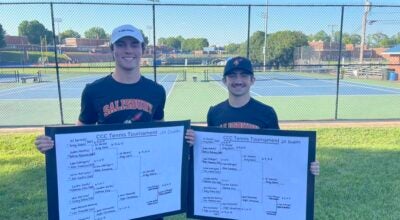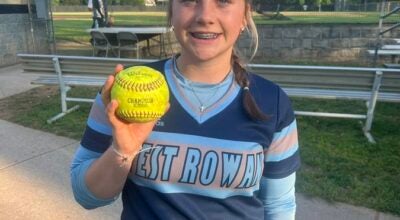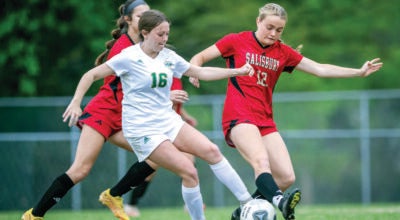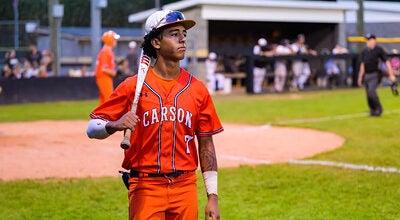Newman awake, speaking after Daytona crash
Published 9:41 pm Tuesday, February 18, 2020

- Rescue workers remove Ryan Newman from his car after he was involved in a wreck on the last lap of the NASCAR Daytona 500 auto race at Daytona International Speedway, Monday, Feb. 17, 2020, in Daytona Beach, Fla. (AP Photo/David Graham)
DAYTONA BEACH, Fla. (AP) — NASCAR driver Ryan Newman is awake and speaking with family and doctors a day after his horrific crash on the final lap of the Daytona 500.
Roush Fenway Racing released an update on its driver Tuesday, about 20 hours after Newman’s car slammed into the wall at nearly 200 mph, flipped, got T-boned by another car, flipped several more times and skidded to a halt in flames.
Everyone watching feared the worst Monday night and had to wait nearly two hours to learn that Newman’s injuries were not considered life-threatening. The latest update was more good news for the 42-year driver and 2008 Daytona 500 champion.
Newman turned hard into the wall after getting bumped from behind by Ryan Blaney a few hundred feet from the finish line. Newman’s No. 6 Ford then flipped onto its roof, where he was helpless as he was walloped in the driver’s side by another car at 190 mph.
Newman’s car continued to skid upside down along the speedway and crossed the finish line in flames as safety crews hurried to snuff out the fire and cut Newman loose. It took about 8 minutes for workers to roll his car rightside-up, and medical personnel used black screens to block spectator views as Newman was placed in a waiting ambulance and taken to Halifax Medical Center.
A sense of relief spread across Daytona International Speedway. There has not been a fatality in NASCAR’s elite Cup Series since Dale Earnhardt died in a crash on the final lap of the 2001 Daytona 500.
Nineteen years later, it’s clear that Earnhardt’s death probably saved Newman’s life. NASCAR spent the last two decades working to improve safety regulations by installing energy-absorbing walls around tracks, mandating the use of head-and-neck restraints attached to helmets and continuing to make improvements to the cars.
•••
BLANEY’S ATTEMPTED PUSH OF NEWMAN LED TO VIOLENT CRASH
DAYTONA BEACH, Fla. (AP) — Drafting, blocking and bumping are essential elements of racing on NASCAR’s fastest tracks. When Ryan Blaney pushed fellow Ford driver Ryan Newman in the final lap of the Daytona 500, it was something both men have done hundreds of times on superspeedways.
For a few seconds, it looked like everything was going to work out Monday night, with a career-defining Daytona 500 victory for Newman. Then Newman’s car angled back into traffic, creating the most violent and frightening wreck at Daytona since the death of Dale Earnhardt in 2001.
What happened? Where did it go wrong? Could it have been prevented?
There are no simple answers. Here’s what we know:
Race-winner Denny Hamlin gave Blaney a huge shove that pushed him toward leader Newman and caused Blaney’s car to wobble. Blaney regrouped and seemingly had enough momentum to drive by Newman when he swerved low. Newman tried to block the move and got hit by Blaney.
“We pushed Newman there to the lead and then we got a push from (Hamlin). … I was committed to just pushing (Newman) to the win and having a Ford win it and got the bumpers hooked up wrong,” Blaney said.
Bump drafting at 200 mph is a delicate maneuver, and a few inches can turn victory into chaos.
Blaney hit Newman’s bumper to the right of center, causing Newman’s car to turn right, barely missing Hamlin, and slamming into the energy-absorbing barrier. The impact caused Newman’s car to flip onto its roof and then its side. Corey LaJoie then crushed the driver’s side of Newman’s car, sending it airborne again. Newman’s car again landed on its roof and skidded past the finish line to a stop, spewing sparks and fuel that caused a fire. It took safety crews about 16 minutes to extricate Newman from his No. 6 Ford and load him into a waiting ambulance. He remained hospitalized Tuesday afternoon.
The aerodynamics package NASCAR uses at Daytona and Talladega, the two fastest and biggest tracks in the series, creates tight packs of cars running close to 200 mph. Drivers work together and draft off each other, essentially pushing the car in front of them, to maintain momentum and avoid losing positions.
A car running alone in the pack without a drafting partner is often shuffled back in the field. Drivers who can lock bumpers and stay connected surge toward the front. The downside to this racing is that one wiggle can create a harrowing accident, and pack racing usually leads to massive wrecks that collect multiple competitors who have no way of avoiding melees.
•••
More AP auto racing:
http://racing.ap.org/salisburypost/
http://racing.ap.org/salisburypost/schedule/
http://racing.ap.org/salisburypost/standings/





